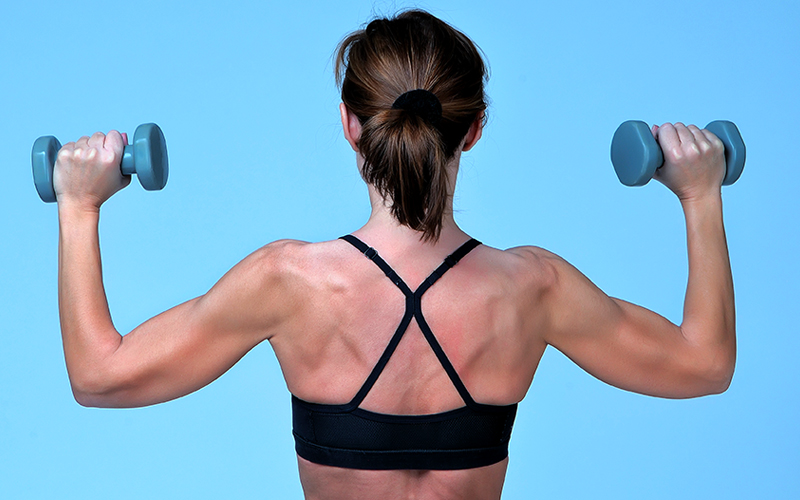The Health series is presented by AdventHealth
As the weather gets colder, sidewalks and driveways are often icy and slippery, leading to an increase in falls, so the winter months are a good time to be aware of health conditions that can make your bones more susceptible to fractures.
Osteopenia and osteoporosis are conditions signifying low bone density, which increases the risk of bone fractures. Osteopenia is a precursor to osteoporosis, meaning it’s simply a less severe form of osteoporosis.
“While there is no bad time of year to discuss osteoporosis and osteopenia, the increased risk of falls and fractures due to snowy and icy conditions makes this a great time to discuss it,” says Jessica Greinke, an internal medicine doctor with AdventHealth Medical Group Primary Care at De Soto. “Unfortunately, there are no symptoms of osteopenia or osteoporosis. If these conditions are not detected on routine screening, oftentimes the first indicator is a fracture.”
Many people take a tumble or two during the winter season. While most of us can get back up and go about our day with only a scrape or a bruise, someone with low bone density is more likely to suffer a bone fracture or break resulting from the fall. That’s why individuals at a higher risk for osteoporosis, especially older women, should be screened for low bone density.
“I think the biggest reason to take this seriously and get screened is that hip fracture is one of the leading causes of hospitalization, institutionalization, and death in elderly patients,” Greinke says. “Once patients start to have fractures, little can be done to recover bone loss.”

Diagnosing Osteoporosis and Osteopenia
Since there aren’t any symptoms associated with osteoporosis and osteopenia, screenings are the only way to catch these conditions before a fracture occurs.
Wondering if you should get a screening? Being a woman, of advanced age (particularly post-menopause), Caucasian race, low body weight, smoking, excessive alcohol use, family history of fractures, celiac disease, and long-term use of steroids such as prednisone are all risk factors for osteoporosis and osteopenia.
“All women should be screened by age 65. If a patient has risk factors for osteoporosis, she should consider screening prior to age 65,” Greinke says. “There is no standard practice for screening men for osteoporosis. Men who have risk factors should talk with their doctor about getting screened.”
Both osteopenia and osteoporosis are diagnosed by a test called a bone mineral density scan, often referred to as a DEXA scan.
The screening test is painless, fast (10-15 minutes), effective, and usually takes place at an imaging center. Typically, patients are positioned on their backs on a padded table while a mechanical arm takes pictures of the bones in the lower back, hips, and/or wrists. Radiation exposure is minimal—even less than a chest x-ray.
Prevention and Treatment
Generally, osteoporosis cannot be reversed, so prevention is key. The best way to prevent onset? Physical activity.
“I recommend at least 30 minutes of weight-bearing exercise every day and muscle strengthening exercises two to three times per week,” Greinke says. “Walking is a great weight-bearing exercise, but there are a lot of options, so I encourage my patients to find an activity that they enjoy. Muscle strengthening can include weightlifting, yoga, Pilates, and many others. Exercise makes bones stronger and less likely to break. Exercise also makes muscles stronger and can improve balance, making falls less likely as well.”
Healthy sources of calcium and vitamin D can also prevent onset. “For calcium, I recommend 1200mg daily—preferably by eating foods such as green leafy vegetables, legumes, or dairy products,” Greinke adds. “For vitamin D, I recommend 800 international units daily. Seafood and eggs are great sources.”
Once osteoporosis or osteopenia has been diagnosed, Greinke says it’s still important for those patients to stay physically active to reduce the likelihood of a fall.
“Limiting further bone decline is priority number one,” she says. “It’s never too late to start or improve healthy habits, such as cutting back on alcohol, quitting smoking, exercising regularly, and eating healthy foods. Doing these things is even more important for a person with low bone density.”
“They should evaluate their home and remedy any situation that would increase their risk for having a fall,” Greinke adds. “For example, consider removing loose rugs or cords that could trip them up and make sure all areas of the home are well-lit. It is also a good idea to have their doctor review their list of medications to ensure they are not taking anything that can increase their risk of falling.”
Early diagnosis and treatment are key for reducing the negative impact of osteoporosis. If you have questions about your bone density or risks for developing osteoporosis, Greinke recommends consulting with your doctor.



